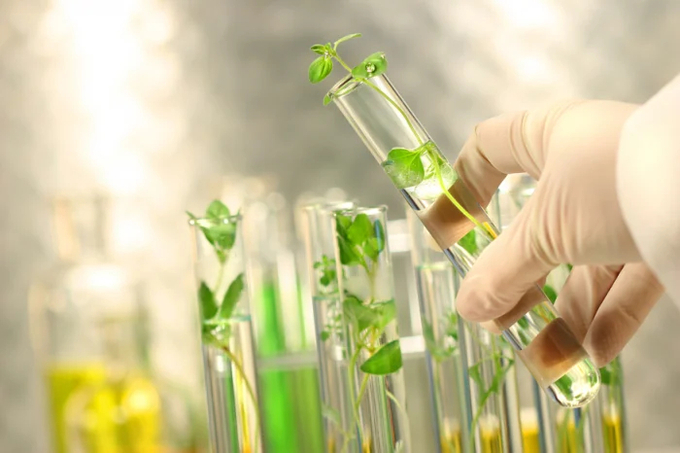December 11, 2025 | 15:25 GMT +7
December 11, 2025 | 15:25 GMT +7
Hotline: 0913.378.918
December 11, 2025 | 15:25 GMT +7
Hotline: 0913.378.918
The overarching goal of the project is to foster the development of biotechnology in the field of environmental protection in a sustainable and eco-friendly direction. This includes efforts to control and improve environmental quality, as well as to utilize natural resources efficiently. Additionally, the project aims to strengthen the research and development capabilities, the application, and the mastery of biotechnological innovations within the environmental protection sector, both at the regional and global levels.

The project on the development of biotechnology in the field of environmental protection until 2030 aims to control and improve environmental quality while ensuring the efficient use of natural resources.
Develop science and technology to support the biotechnology industry in environmental protection.
Strengthen capabilities to promote the development of biotechnology and encourage its application in the field of environmental protection.
Create and refine a legal framework, mechanisms, and policies to support the development of the biotechnology industry in environmental protection.
Foster international cooperation in the biotechnology sector for environmental protection.
Implement communication strategies to raise awareness about the role of biotechnology in environmental protection.
The project also outlines specific goals, such as conducting research and developing biotechnological solutions for environmental protection. It aims to master core and advanced biotechnologies, which will be used to create waste treatment products for industries such as agriculture, forestry, aquaculture, medical waste treatment, and household waste management.
Additionally, the project sets a target to establish and develop at least 10% of enterprises engaged in industrial-scale production of biological products used for waste treatment and the manufacturing of biological products aimed at protecting the environment.
There will also be investments made to develop human resources and the necessary laboratory facilities to support the biotechnology sector's growth in environmental protection. Special focus will be placed on developing biological products designed for efficient waste treatment.
One of the key goals of the project is to finalize the national legal framework and establish a centralized national database that will support the development of biotechnology and related industries in environmental protection.
In the science and technology development area, the project prioritizes the research and application of biotechnology and waste treatment technologies for sectors such as agriculture, forestry, aquaculture, medical waste management and industrial waste treatment. It will place special emphasis on energy recovery technologies and the recycling of waste materials. The goal is to adopt and adapt advanced biotechnology systems and equipment from countries with leading biotechnology industries. The country will scale up biotechnological solutions for environmental protection at an industrial level.
Furthermore, the project aims to develop local enterprises that are capable of producing competitive biological products for environmental management, with a specific focus on waste recycling. This includes fostering local businesses to adopt, master and spread modern biotechnological practices from advanced countries. These solutions must be effectively applied under the specific conditions of Vietnam.
Translated by Phuong Linh

(VAN) The purpose of this visit is to unify the proposal for a technical assistance project supporting sustainable agricultural and forestry development in Angola.
![Unlocking carbon credit potential: [3] New direction for rice production](https://t.ex-cdn.com/nongnghiepmoitruong.vn/608w/files/huyenvt (e)/2025/12/10/3428-2-092319_209.jpg)
(VAN) Low-carbon rice models in Thanh Hoa are opening up opportunities for a green, circular agriculture, aiming at carbon credit generation.
![Unlocking carbon credit potential: [2] Story of Pu Hu forest](https://t.ex-cdn.com/nongnghiepmoitruong.vn/608w/files/huyenvt (e)/2025/12/09/3813-2-171042_611.jpg)
(VAN) Revenue from emission reductions has brought major changes to the Pu Hu Nature Reserve, from improving community livelihoods to strengthening linkages for sustainable forest management.
![Unlocking carbon credit potential: [1] Toward a green economy](https://t.ex-cdn.com/nongnghiepmoitruong.vn/608w/files/huyenvt (e)/2025/12/09/1340-2-130237_804.jpg)
(VAN) Thanh Hoa is advancing the development of carbon credits from forests and agriculture, generating sustainable income, improving livelihoods, and moving toward a green and low-emission economy.

(VAN) After three years, Project FST/2020/123 collected approximately 3,000 insect specimens, classified them into about 50 morphological groups, and identified around 40 species, including several new species.
/2025/12/01/0509-2-175427_206.jpg)
(VAN) Emission-reducing coffee areas in Lam Dong have entered the new crop with stable yields, improved quality, and a remarkably enhanced cultivation environment.

(VAN) The Institute of Agricultural Sciences for Southern Vietnam (IAS) marked its 100th anniversary in Ho Chi Minh City, celebrating a century of growth as a leading institute contributing significantly to Viet Nam’s agricultural development.